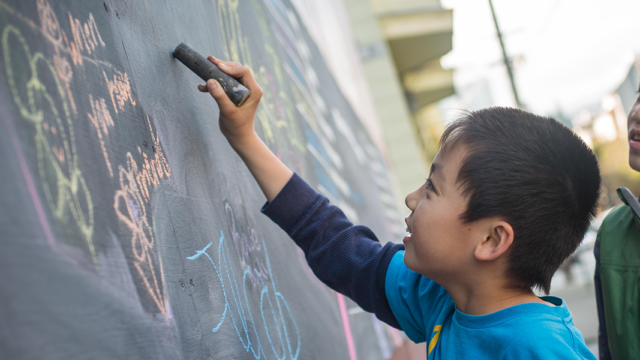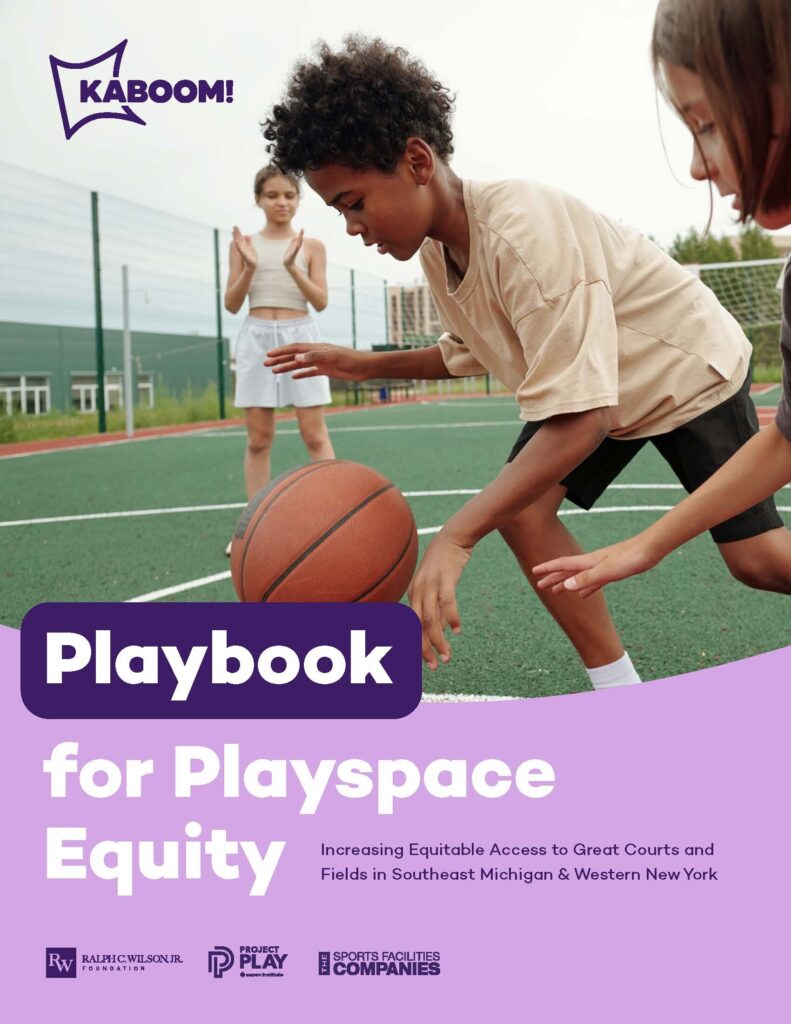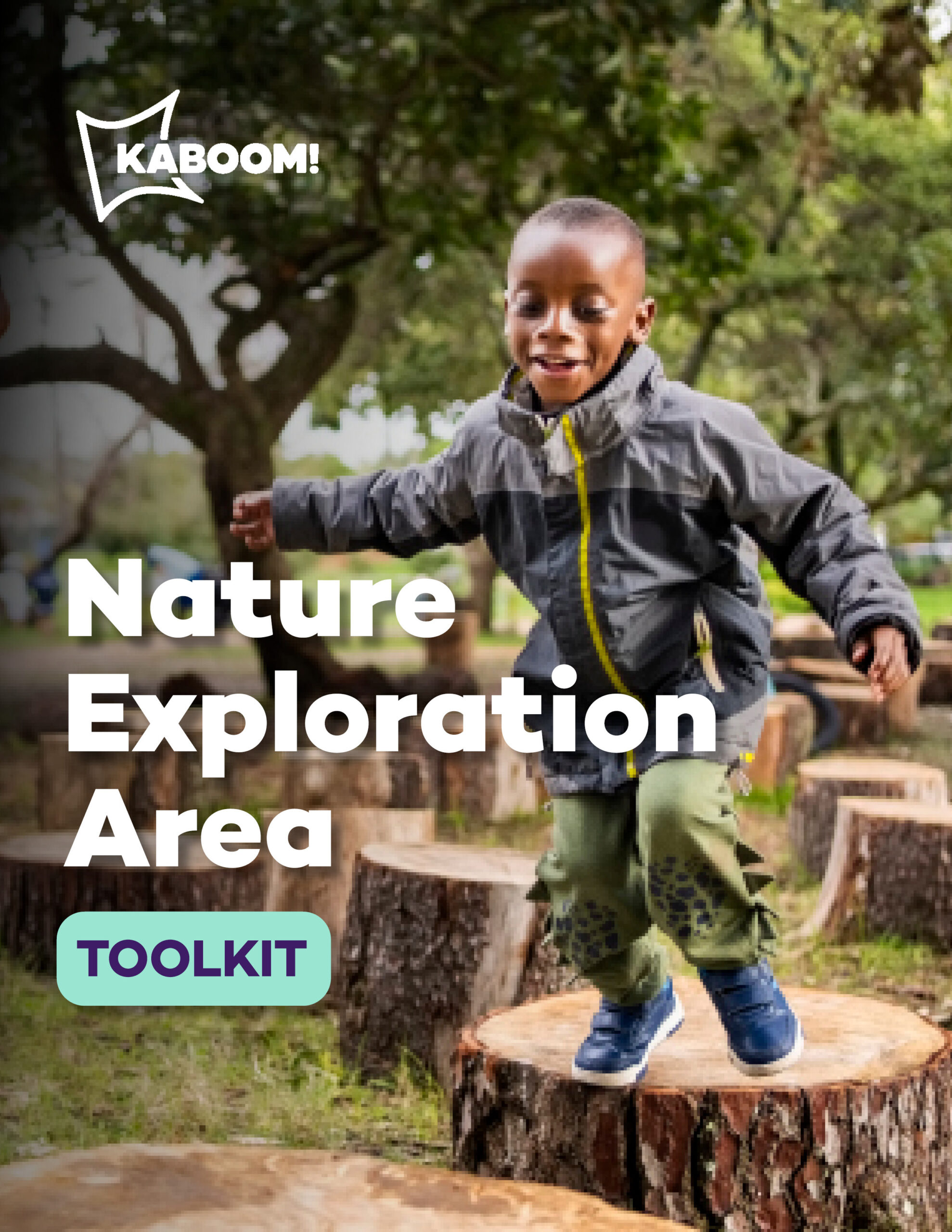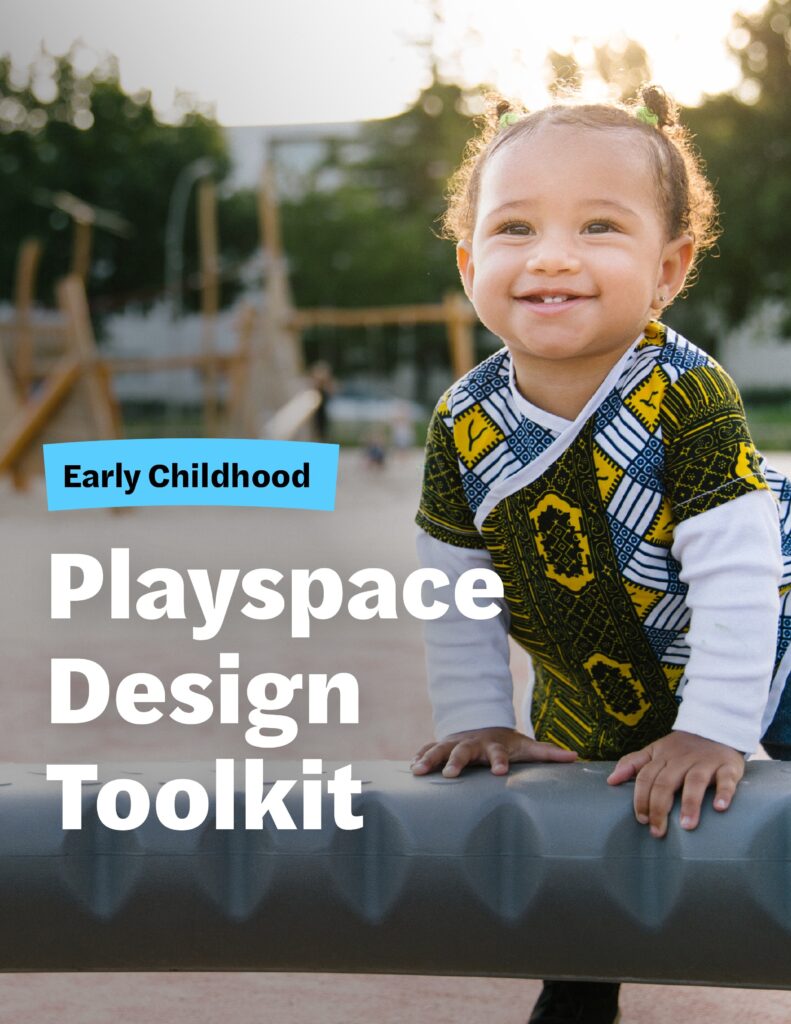Research
View All Research
Theory of Change: How We Work
KABOOM! is committed to achieving playspace equity so that kids can grow up happy and healthy. But increasing access to playspaces isn’t enough. We believe kids will be happier and healthier if those spaces are used often and if there is a strong sense of belonging in those spaces among community members.
To get there, our work is organized around:
- Partnering to support and build playspaces in communities experiencing historic disinvestment
- Including community voices in the playspace design process
- Encouraging volunteer participation during the build planning

This is outlined in our Theory of Change, a visual representation and guidepost of how KABOOM! will create the change needed to achieve our mission so kids can grow up happy and healthy.
Playspace Inequity Prioritization Index (PIPI)
In 2022, KABOOM! developed the Playspace Inequity Prioritization Index (PIPI) to estimate the level of playspace inequity occurring across all 86,000+ census tracts in the United States. PIPI combines data from 21 different indicators to create a single score, allowing us and our partners to estimate the need for playspaces in every neighborhood across the United States. Using PIPI, we can identify and map areas for prioritization and direct our work accordingly.
Understanding PIPI Scores
The 21 indicators of playsapce inequity are broken down into three categories: population characteristics, park and built environment characteristics, and indicators associated with historic and ongoing inequities.
Systemic Racism and Play
What do playgrounds, data, systemic racism, and maps have in common? At the 2023 American Evaluation Association conference, KABOOM! presented PIPI and how we use data to prioritize which communities we work in.
The publications below explore the benefits of play for kids, as well as the harms that affect communities when kids don’t have access to play.
Playbook for Playspace Equity
This Playbook shares how KABOOM! and the Ralph C. Wilson, Jr. Foundation worked with the Aspen Institute and Sports Facilities Companies to identify and address inequities in access to courts and fields across Southeast Michigan and Western New York. Using data, community voice, and regional collaboration, it offers a roadmap for leaders to plan, fund, and sustain more equitable playspaces, providing lessons that can be applied anywhere.

Nature Exploration Areas Toolkit

New resource helps cities design nature-infused playspaces that support climate resilience, child well-being, and equity.
Early Childhood Playspace Design Toolkit
The KABOOM! Early Childhood
Playspace Design Toolkit provides
recommendations for the
development of outdoor early
childhood playspaces that
support children ages 0–5.

New Playgrounds Lead to Increased Use in Uvalde

Cellphone data from two parks with new KABOOM! playgrounds demonstrates that more kids and families are playing in Uvalde, TX.
Built to Play
Understanding the outcomes of playspaces and skateparks
What happened when the Ralph C. Wilson, Jr. Foundation teamed up with The Skatepark Project and KABOOM! to launch Built to Play? More than 90 placespaces and skateparks have been created across Western New York and Southeast Michigan since 2018, thanks to community partnerships, expert support, and a catalytic Foundation investment. Through a Gehl people-led study, you can now dive into the findings of how Built to Play reshaped lives at the both the individual and community levels.

The State of Playspace Equity in Three Colorado Communities

Does your neighborhood have a quality playground within reach? The answer might depend on your socio-economic status, race, and ethnicity. In this report details the results of a recent playspace mapping project that identified inequities in access and quality across three communities in Colorado. The findings include recommendations and a new index developed by KABOOM! that estimates playspace inequity using nationally available data across 21 population, inequity, and environmental indicators. This project and the interactive report were completed by KABOOM!, North Carolina State University, and College of Charleston with the generous support of The Colorado Health Foundation.
Review of Studies and Data on Playspace Equity for Children
What the data says about playspace inequity in Colorado and nationwide
A team of experts from NC State University and College of Charleston, and with the generous support of The Colorado Health Foundation, partnered with KABOOM! to provide a community-informed research effort to map playpace inequity in three Colorado communities and summarize what the research says about equitable access to quality playspaces in Colorado and nationwide.

Ending Playspace Inequities for Baltimore’s Kids
Findings from a Playspace Infrastructure Assessment

Together with a community of families, educators, and administrators, KABOOM! and Baltimore City Public School System (BCPSS) developed a common understanding of where playspace inequity exists and co-created a plan of action for addressing it system-wide within a reasonable and ambitious timeline.
This report highlights the impact the history of systemic racism within Baltimore has had on the City Schools system, and outlines our data, methodology, and an assessment of BCPSS playspaces.
A Race Equity Journey
The Path to our Playspace Equity Commitment
This paper details the past, ongoing, and planned efforts of KABOOM! to advance a vision called playspace equity. We view the path toward playspace equity as a racial equity issue. Within the paper, we reflect on our journey in a respectful, factual, and vulnerable way. We do not purport to have all the answers, and are learning and growing together along the way.

Additional Publications
Browse previous published reports detailing the impact of our work on kids and communities.
View All Publications